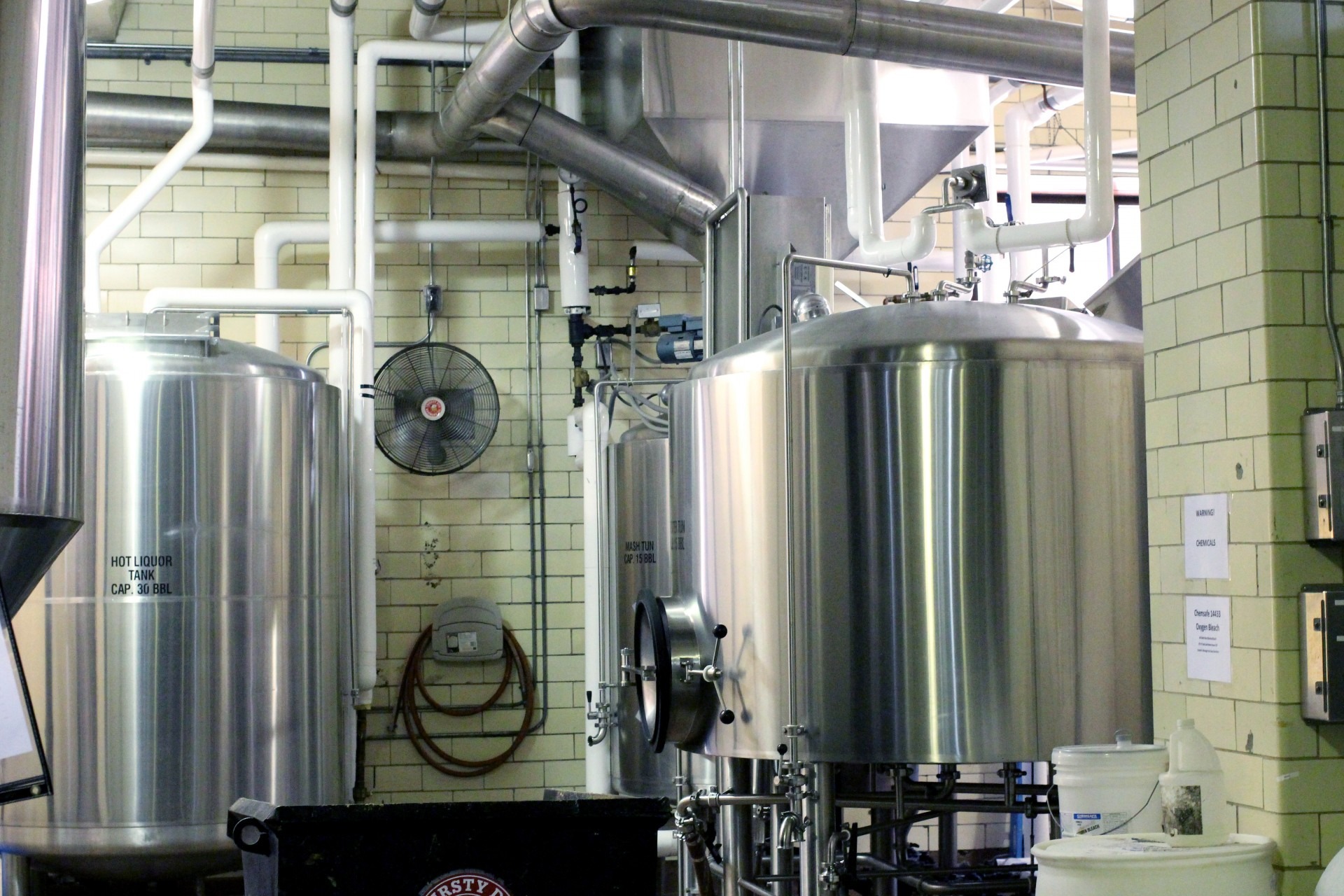 Many major tech companies like Amazon are now using custom Internet of Things (IoT) development in tandem with machine learning to improve warehouse operations.
Many major tech companies like Amazon are now using custom Internet of Things (IoT) development in tandem with machine learning to improve warehouse operations.
Manufacturing and logistics are getting automated quickly. It’s easier than ever for Amazon to grab a product from a shelf and send it to a nearby store for customer pick-up. But where does industrial IoT go from here?
The New Industrial Revolution
Historically, technology revolutionizes manufacturing in big waves. After the first industrial revolution (brought about by the steam power engine), companies have looked long and hard for faster, cheaper, and more efficient processes. The companies that make vast improvements in their operations have usually risen above their competitors, and it’s no different today.
Technology is a double-edged sword; while it’s bolstering a business’s success, it could also be taking another one down. With that in mind, it’s no wonder companies around the world are racing to be on the “thriving” side of that equation. IoT is now a necessity for companies involved in any supply chain. In fact, it could be the biggest factor in determining their survival or demise.

But it’s not enough to just integrate IoT into current processes. The quality of implementation matters too. When combined with strong data science and business intelligence platforms, IoT can guide a company to unparalleled efficiency and unprecedented profit. But with a weak IoT network or one prone to cybersecurity attacks, it doesn’t take much to put a company out of business.
It’s no surprise that IoT, an extremely versatile and extendable technology, is bringing humanity to the Industrial Revolution 4.0, also known as “Industry 4.0”. But this era won’t come without some drastic changes to how organizations operate.
Solving the Data Problem
Manufacturing and supply chains deal with hundreds of machines, thousands of inventory tracking sensors, and millions of pieces of inventory. As a result, there is a huge amount of data generated every single day. Gathering, storing, and analyzing data in real-time, over a few weeks, or over a quarter can make a big difference for revenues and employee efficiency.
IoT can streamline all of the steps involved in data acquisition and analysis. Not only that, but it often works in the background, letting employees focus on labor-intensive and creative tasks instead of monitoring machines or keeping track of machine maintenance schedules. Even field employees benefit from IoT; external sensor data and internal warehouse information can give field employees actionable insights.
All of this data can also help inform decisions about a company’s future; for example, before choosing a new location for a new warehouse, a business can see from current data that their products don’t do so well in moist environments. Or before hiring a new batch of employees, analyzing current data can tell you there are a few extra employees at a nearby warehouse that can be shifted to the new location.

Intel, based just outside of San Francisco, is using IoT to create more modern manufacturing processes, better data gathering, and improved data analytics. The company also uses IoT for preventative maintenance, predictive analytics, machine learning, big data, and much more.
According to industry experts, “With billions invested in semiconductor process equipment, the IoT is leveraged to reduce capital costs, increase quality and improve time to market.”
Complex Inventory Management
IoT can help businesses manage complex inventory setups. According to DMW, a distribution solutions firm, “Having goods on hand is common sense. The tricky part is knowing how much inventory to have on hand. Stock too much and the goods don’t move fast enough. The price spoils. Have too little and a frustrated shopper will go elsewhere.”
Varying levels of supply and demand can make a company’s profits unpredictable. Leveraging data, businesses can see how their supply of goods correlates to consumer demand. Eventually, these learnings can even become part of a greater effort to improve a business’s predictive analytics. Predictive analytics can also help inform enterprises about expanding products or services and investing in old products.
When it’s time to manufacture the goods, the decisions leading up to production are more informed and more likely to be the right choice. With IoT, it’s easier to monitor inventory in real-time, locate products, chain multiple factories’ data, connect to the greater supply chain, improve operations as supply and demand ebb and flow, and much more. It’s easier to set performance goals and meet them when there’s data to turn to.
Cybersecurity Is Still a Concern
Despite the many advantages IoT is bringing to the table, there is still one concern that must be addressed: cybersecurity.
When California passed SB 327 in late September, many experts came out to voice their concern about the bill’s vague wording. The bill, the first law of its kind in the U.S., is aimed at requiring IoT device manufacturers to be built with “reasonable” security features. And while these experts were against the bill’s wording and lack of encryption protocol standards, most of them agreed that something has to be done about the state of IoT security.
The law, which will be active in 2020 for regulating businesses, may or may not improve IoT cybersecurity. But enterprises have much more to lose from a cybersecurity attack than the government does. And the lack of strong voice from enterprises using IoT indicates that most businesses still don’t understand the hard-hitting ramifications of a hack.
A recent report, Vectra’s 2018 Spotlight Report on Manufacturing, found that manufacturing incurs cybersecurity attacks more than other industries; reconnaissance activity, lateral movement, and malicious internal network activity are the cited attacks that most manufacturing enterprises fend off daily.
Conclusion
IoT is revolutionizing manufacturing, supply chains, and industrial enterprises. Enterprises that adopt this technology quickly will have many advantages over their competitors. But we don’t have to be working in a factory or analyzing a warehouse’s operations to feel IoT’s effects.
With faster delivery times, lower product costs, better inventory management, and an improved customer experience from the factory floor to the moment it reaches our doorstep, we’ll all benefit from the new Industrial Revolution.





